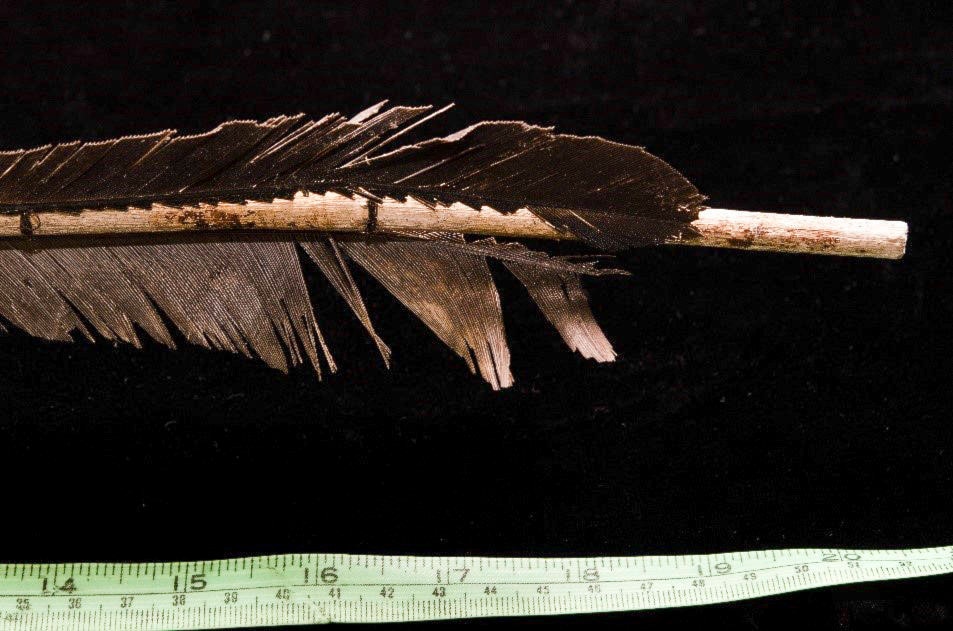A new study led by Kate Helwig and Jennifer Poulin at the Canadian Conservation Institute has identified beaver castoreum as a design component of a 6,000-year-old Yukon atlatl-throwing dart.
Castoreum is a yellowish-brown fluid from the castor sacs of mature beavers. Beavers use castoreum and a combination of urine to scent-mark their territory.
The two-metre long atlatl-throwing dart was discovered melting free from alpine ice in the traditional territories of the Carcross/Tagish First Nation and the Kwalin Dün First Nation in the fall of 2018.
As far as the authors know, this is the first instance where castoreum has been identified in an ancient archaeological context.
Kwanlin Dün First Nation Chief Doris Bill said this artifact will help further present-day learning about “our ancestors”.
“Our ancestors were connected to the land, the water, and the animals in our traditional territories,” said Bill in a press release. “They understood how to use the things around them to design complex and ingenious tools, like the atlatl.
“Shä̀w níthän to all of the people who worked together to bring this ancient technology into the light so our people can continue to learn from the knowledge of our ancestors.”
Research started when Valery Monahan, Yukon Museums Conservator and study co-author, found orange residue coating the sinews and wood at different binding locations of the artifact.
Analysis of the residue showed it to be castoreum. Whether it was applied as a preservative, an adhesive or a colourant is unknown.
Carcross/Tagish First Nation Haa Sha du Hen Lynda Dickson said “our lands hold many secrets and insights into our past”.
“Unearthing and studying these findings is valuable not just from a scientific and historic perspective, but culturally,” said Dickson. “Walking hand in hand with the land, water and wildlife is the history of our people.
“Their resourcefulness and ingenuity continue to impress and teach us. Gunalchéesh to the people helping keep us connected to our ancestors.”
Similar studies of Yukon ice patch artifacts have shown a mix of spruce resin and red ochre applied as an adhesive.
“This discovery demonstrates yet again the sophisticated knowledge Yukon’s ancient First Nations people had about their environment, lands and resources.”
Working in partnership with the six First Nations within whose traditional territories the ice patches are located has “yielded unprecedented findings of ancient hunting tools and artifacts,” said Minister of Tourism and Culture Ranj Pillai.
“These discoveries have led to a greater understanding of Yukon’s past,” said Pillai. “The study’s finding is testament to the incredible preservation of these artifacts and the information they hold, and illustrates just how much there is still to learn about how Yukon’s first peoples lived.”
The site where the artifact was found is on Canada’s Tentative List of sites to be nominated as a UNESCO World Heritage Site.
A Beringia Centre Science Talk about the paper and findings will be on June 17 and livestreamed on the Beringia Centre Facebook page.
Contact John Tonin at john.tonin@yukon-news.com
